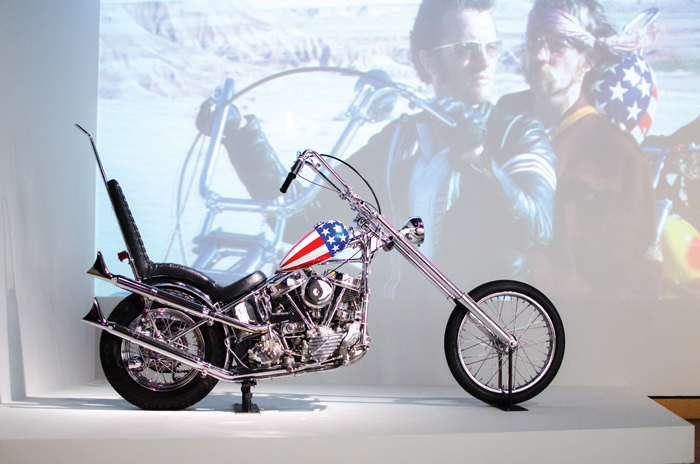Once Upon a Time… The Western is a multi-media exhibition at the Montreal Museum of Fine Arts (MMFA) in collaboration with the Denver Art Museum, that opened on Oct. 14 and will last until Feb. 4. The exhibition explores the Western genre—more specifically, the ways in which media has historically engaged viewers in a dialogue about Westerns, and how that dialogue has continued to shape our perception of the North American West today. According to the principal curators and organizers of the show, Mary-Dailey Desmarais, Thomas Brent Smith, and Nathalie Bondil, the exhibition seeks to bring together two seemingly unrelated cities, through Montreal’s extensive cultural emphasis on film and Denver’s presence at the heart of the American West.
Once Upon a Time features work from prominent artists such as Franz Kline and Paul McCarthy, as well as film clips featuring beloved Western characters like Jesse James, Geronimo, and Billy the Kid. Through cinematography, paintings, statues, and artifacts, the exhibition takes the traditional image of the West, complete with gun toting, horse-riding cowboys, and forces contemporary viewers to look beyond culturally instilled stereotypes. Museum-goers are confronted with a series of film clips and artistic visuals that push them to understand their conceptions of western life and to build upon them within the framework conveyed by the exhibition.
As Desmarais describes, within the context of an increasingly violent modern life, the exhibit is also indicative of the power of images, which present a new form of honest and artistically-rendered reality compared to that portrayed by contemporary media. Once Upon a Time also tackles North American historical identity, drawing on themes of liberty, justice, and valour and mapping these attributes across the United States and into Canada and Quebec.
While many consider the western story composed of simply the quintessential “cowboys vs Indians” narrative, rife with dusty bar fights and duels at daybreak, the exhibition also sheds light on thematic elements that are overlooked, yet remain highly relevant to the western time period. In the wake of World War I and the culturally pervasive reaches of the Vietnam War, western films and art were mobilized to express distaste against growing levels of institutionally-accepted violence. The exhibition also addresses the issues of female portrayal in the western and artistic world, ‘blaxploitation,’ whereby black characters are cast, typically in film, with heavy emphasis on cultural stereotypes, and the complex relationship between white society and Native Americans or First Nations Peoples.
Wandering through the exhibition, it is evident that the curatorial team not only carefully considered the content for the show, but also the means of presenting the work. With the dim lighting and gunshots emanating from the various screens scattered throughout the interconnected rooms, viewers are confronted with an ominous and somewhat reverent atmosphere before even examining the content of the work. The pieces in the exhibition deviate from the more traditional understanding of western art, usually characterized by seemingly interminable portraits of desert landscapes, and instead provide portraits, scenes from iconic western films, and even a room of stuffed and melancholy skinned bison. The tumult of interracial conflict and struggle for survival is captured in the brush strokes and camera lenses of the numerous artists and directors. For Montrealers finding themselves with nothing to on a weekend afternoon, Once Upon a Time… The Western is a transcendent gallery experience that leaves viewers questioning the thematic intricacies of their favourite John Wayne films and the historic influences that led to them running naked through the house as children with nothing but cowboy boots on.









